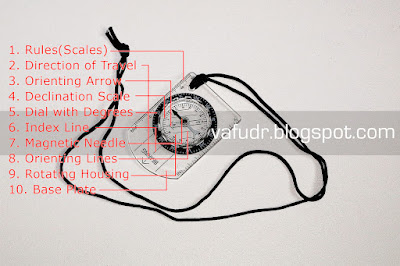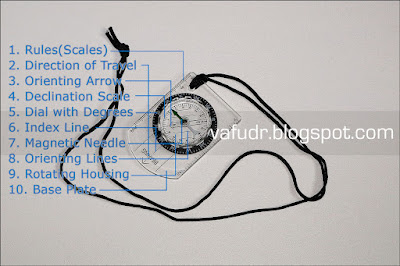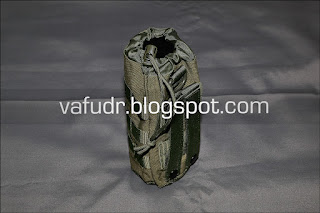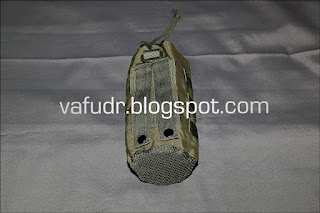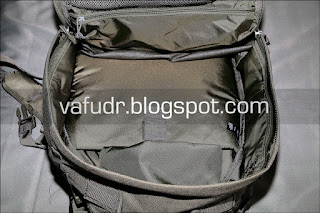This blog was originally conceived as a personal reference. Later I added notes and my publications
Tuesday, December 28, 2021
Funny example of a fake for 5.11 tactical from China - fleece Cap and Neck Warmer
Another funny example of a fake for 5.11 tactical production from omnipresent China - Winter men's fleece Cap and Neck Warmer (Balaclava)
5.11 tactical never produces such apparel
By the way, this has already been noticed in Minsk.
Available in store, store, store
Кстати, в Минске это изделие уже замечено в Минске
Monday, December 20, 2021
Compasses
Types of compasses
There are many kinds and shapes of compasses, however these are the most common you see marketed for survival purposes:Button compass. Sometimes they’re stand-alone, however they are often built into other gear, like a water-proof match container, to make it seem more "survivaly."
Clear baseplate compass. A transparent plastic base that might be rigid or foldable. The most frequent type for orienteering, and often referred to as an orienteering compass.
Lensatic military compass. Folds in half like a clamshell. Tougher construction. Designed to give very accurate bearings for army needs, eg. for calling in an artillery strike.
Parts of a Compass
1. Rules(Scales)Each edge of a compass may have different rulers for use with different map scales
2. Direction of Travel
This is a constant line or arrow marked on the base plate, located outside the spinning compass compartment. It points in the same direction the front of the compass is pointing.
3. Orienting Arrow
It is marked on the floor of the housing. It rotates with the housing when the dial is turned. You use it to orient a compass to a map.
4. Declination Scale
It is used to orient the compass in an area with known declination.
5. Dial with Degrees
This is a ring around the housing that has degree markings engraved. You hold the dial and rotate it to rotate the entire housing.
6. Index Line
This is a thin line that points in the same direction as the direction of travel line. It doesn’t spin, however it’s in or close the spinning compartment.
7. Magnetic Needle (arrow)
Magnetic North seeking arrow is magnetized piece of metal that has one end painted red to indicate North. This is the main arrow you’re all familiar with. It sits on a fine point that is nearly frictionless so it rotates freely when the compass is held fairly level and steady. The tip is usually red, which teachers often use in the memorable "red in the shed".
8. Orienting Lines
Built into the face of the compass so that it points to 360 degrees on the rotating bezel ring. The orienting arrow and lines will point wherever you rotate the bezel. The space inside the arrow is the "shed".
9. Rotating Housing
The rotating ring around the Magnetic North seeking arrow with the degree numbers from 0 to 360.
10. Base Plate
Base Plate is hard, flat surface on which the rest of the compass is mounted. It has a rulers on its edges for measuring distances on maps.
1. There are rulers that can be used along with map scale to help calculate distance.
2. A direction of travel arrow reminds which direction to point the compass when taking a bearing.
3. The big arrow called the orienting arrow which we’ll use to help orient the bezel.
4. Some compasses have a handy declination scale which makes it easier to adjust declination.
5. The big circle dial with degrees is the rotating bezel which is marked with degrees from N clockwise up to 360.
6. There is a little marker called the index line which marks where bearings can be read.
7. Inside the bezel, the first thing can be noticed is the magnetized needle which always points to the magnetic north pole, not the true North Pole.
8. Alongside the orienting arrow our orienting lines that can be used to help line up the compass with north on a map.
9. A liquid capsule that contains the magnetic needle is rotating housing. The liquid helps dampen the needle movement, making it easier to get a more accurate reading.
10. The base plate is clear so the map below it can be seen, and there’s always at least one straight edge that can be used later for taking bearings.
Wednesday, December 8, 2021
Water Bottle Tactical Molle Pouch
Size: 24*9cm
Weight: 90g
Material: 1000D nylon
Color: Green
Vacuum thermos ESBIT 0.5l was placed in the pouch.
Review: At the bottom of the pouch there is a mesh, which is an unfortunate solution.
Available in store, store
Тактическая сумка с системой Molle для бутылки с водой
Sunday, December 5, 2021
Drainage grommets on 5.11 tactical RUSH24™ 2.0 BACKPACK
Drainage grommets eyelets with steel rings were put on the bottom of 5.11 tactical RUSH24™ 2.0 BACKPACK 37L Ranger Green.
There were no eyelets in 5.11 tactical RUSH24™ 2.0 BACKPACK 37L in contrast to the previous model (without 2.0).
Дренажные люверсы на тактическом РЮКЗАКЕ 5.11 RUSH24™ 2.0
There were no eyelets in 5.11 tactical RUSH24™ 2.0 BACKPACK 37L in contrast to the previous model (without 2.0).
Дренажные люверсы на тактическом РЮКЗАКЕ 5.11 RUSH24™ 2.0
Saturday, December 4, 2021
Differences between Rush 2.0 and Rush series
First in row is the Rush 2.0
To be continued... Differences between Rush 2.0 and Rush series. Part 2
Hidden CCW (Carrying a Concealed Weapon) compartment with loop panel was added in Rush 2.0
Two gidration ports near grab handle are absent in Rush 2.0
Padded laptop sleeve in main compartment
Padded back was changed
Drainage grommets were removed in Rush 2.0
To be continued... Differences between Rush 2.0 and Rush series. Part 2
Thursday, December 2, 2021
How To Become A Gray Man in Urban Survival
Knowing how to be a grayman is probably the best urban survival skill that anybody can learn. No fancy equipment, no fancy gadgets, just good old fashion common sense integrated with instinct and innovation.
Find out how you can be invisible in a sea of a million people.
Being a grayman means moving amongst the crowd undetected. This is an essential skill in a survival situation and a real survivalist have to be always prepared when such event rises.
Do it wrong and you’re dead. Do it proper and you’re home free.
How is this accomplished? It seems easy enough – just blend in. But there is quite an art form to this.
The best grayman is ordinary in every respect. He’s of average height and weight.
Carrying a big bag will also help you appear smaller.
Find out how you can be invisible in a sea of a million people.
Being a grayman means moving amongst the crowd undetected. This is an essential skill in a survival situation and a real survivalist have to be always prepared when such event rises.
Gray Man Skills
This survival tactic is a form of urban camouflage referred to as “grayman”, and in the middle of an urban crisis or martial law, it ought to be the only thing that keeps you from having a target painted on your back and a bullet in your brain. Being a grayman and having the ability to seamlessly slip in and out of situations unnoticed is an art form mastered by few.Do it wrong and you’re dead. Do it proper and you’re home free.
What Is a Gray Man?
A gray man is anyone who blends in where they go. It is a person who does now not stand out.How is this accomplished? It seems easy enough – just blend in. But there is quite an art form to this.
Size
Height is an aspect of being a grayman that we have little control over.The best grayman is ordinary in every respect. He’s of average height and weight.
For Men
Long shorts, monochromatic colors or horizontally striped clothing, flat shoes, leaving a longer shirt un-tucked, and slouching should all help you to appear shorter. The slouch will also help make you appear as less of a threat by making you seem unhealthy.For Women
Try wearing capri pants, or pants with cuffs in them. Wear flats instead of heels that cover the tops of your feet.Carrying a big bag will also help you appear smaller.
Dress
Natural or neutral colors work best - browns and grays. Highly colourful and graphic shirts have to be averted at all costs. Neither that shows off a lot of skin and nor too fashionable.Как стать серым человеком при выживании в городе
Subscribe to:
Posts (Atom)






